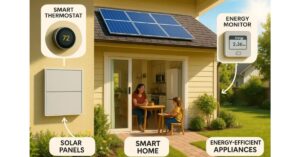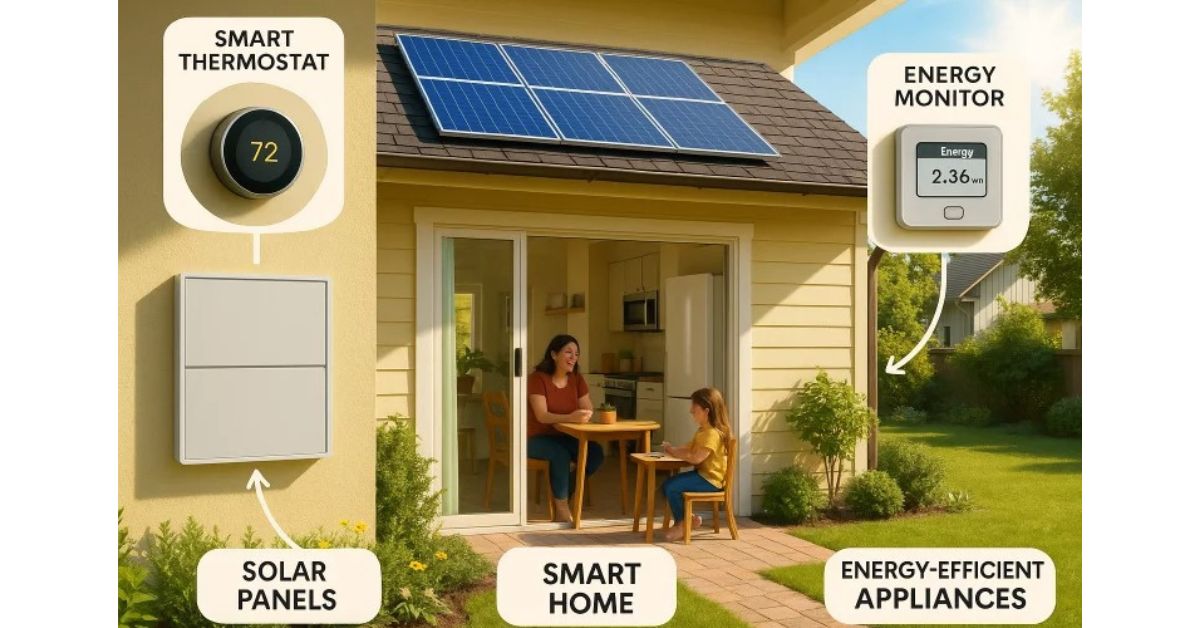As more homeowners look for innovative solutions to reduce their expenses while living more sustainably, solar energy has rapidly become a frontrunner in eco-friendly home improvements. However, the path to solar savings goes far beyond mounting panels on your roof. Rather, the savvy homeowner can take advantage of a wide array of modern tools, government programs, and efficiency strategies to dramatically enhance the financial returns of their solar setup. Maximizing savings with solar panel tax credits is one of the most impactful ways to lower upfront costs and boost long-term value. Understanding and leveraging resources like solar panel tax credits—combined with smart adoption of technology and energy-conscious habits—creates an opportunity for savings and a more resilient, environmentally responsible lifestyle. Approaching solar energy as an integrated part of a holistic efficiency plan ensures you’re making the most of your dollars and the planet’s resources.
Timing Appliance Use with Solar Production
Maximizing your solar savings can be as simple as paying attention to when you use power-hungry appliances. The midday and afternoon hours are when your solar panels produce the most energy, so it makes sense to run appliances like washing machines, dishwashers, dryers, and even air conditioning during these periods. By aligning your energy-intensive tasks with your panels’ peak production, you directly utilize your home’s solar electricity, which decreases the amount you must draw from your utility, especially important if your energy provider charges more during high-demand periods. Utilities increasingly offer time-of-use (TOU) pricing, where rates fluctuate based on demand history. Smart planning—such as scheduling your laundry for noon instead of evening, or letting your dishwasher run after lunch—can result in substantial utility bill reductions. Today’s programmable appliances and smart plugs help automate this process, ensuring your routines effortlessly match your solar generation curve and leaving you with fewer worries about manual adjustments.
Investing in Energy-Efficient Appliances
Upgrading to energy-efficient appliances is a crucial strategy for enhancing the impact of your home’s solar system. Modern Energy Star-certified refrigerators, stoves, washers, dryers, and HVAC units are engineered to use up to 30% less energy than non-certified counterparts, translating into lower base energy consumption for your entire household. As your base load drops, your solar array can better cover a greater portion—or even all—of your needs, which means bigger utility savings and greater independence. Furthermore, when appliances eventually need replacing, choosing models with high efficiency ratings and smart features enables advanced scheduling, energy monitoring, and even remote activation. Together, these intelligent systems offer continuous optimization, ensuring your solar production works as hard as possible on your behalf while helping lower your carbon footprint and recurring costs.
Implementing Smart Home Technologies
Smart home technology advancements have revolutionized how homeowners interact with their energy consumption. Devices such as smart thermostats can learn your household patterns, automatically reducing heating and cooling during periods when rooms are empty or everyone is away. Real-time energy monitors track exactly where your electricity is going, making it easier to pinpoint and address energy wasters, such as “phantom” loads from electronics left in standby mode. Smart hubs can group appliances into zones, prioritize direct solar use, and shift certain loads to coincide with solar production or off-peak rates. For example, a smart water heater might only operate when there’s ample solar power available. These intelligent systems offer increased daily savings and valuable insights into larger consumption patterns, empowering you to make informed upgrades or behavioral tweaks that result in cumulative long-term benefits.

Exploring Community Solar Programs
Not every house or homeowner is a candidate for rooftop solar, whether due to shading, structural limitations, or tenancy restrictions. Fortunately, community solar programs are filling this gap by providing access to clean solar electricity through local, shared solar installations. By subscribing to a community solar project, you claim a portion of its output and receive monthly credits that offset your electric bill. This approach democratizes solar energy, making its financial and sustainability benefits available to renters, condo dwellers, and anyone whose property isn’t solar-suitable. Community solar subscriptions often include flexible terms, so you can retain your solar benefits even if you move within the region. Many local utilities and independent providers now offer comprehensive directories and sign-up support to help you locate and participate in these programs. With community solar, you join a movement of individuals working collectively toward energy cost reduction and advancing renewable energy in your area.
Participating in Virtual Power Plants
The concept of virtual power plants (VPPs) is making headlines as a game-changer for distributed solar. VPPs unite the energy production and storage capabilities of many individual homes—equipped with solar panels and batteries—into a seamlessly coordinated resource that supports the grid just like a conventional power plant. By participating in a VPP, your system becomes part of a larger, flexible network that can deliver power to the grid when it’s most needed. In exchange for letting grid operators tap your stored solar reserve during peak demand events, you’re compensated through direct payments, bill credits, or participation bonuses. This innovative model unlocks a new revenue stream for proactive solar homeowners and plays a key role in building a more resilient, stable local grid.
Utilizing Solar Battery Storage
Solar battery storage offers flexibility and resilience in your energy plan, allowing you to store surplus electricity during outages or peak periods. This reduces reliance on expensive grid power and provides backup in areas with severe weather. The right battery depends on daily usage patterns, climate, and utility rate structures. Lithium-ion batteries are popular due to their long lifespan and efficiency. Consult a reputable solar provider to match battery capacity to personal energy goals.
Understanding Net Metering Benefits
One of the cornerstones of solar homeowner savings is net metering. This policy lets you earn credits for every kilowatt-hour surplus solar energy you contribute to the utility grid. The credited energy can be used to offset what you consume from the grid at night or during cloudy periods, which helps smooth out seasonal production fluctuations and keeps your electric bills consistently low. However, the exact structure of net metering programs—such as credit rates, how long credits roll over, and annual settlement policies—can differ widely between states and utility companies. Mastering your provider’s rules and monitoring potential policy changes ensures your solar investment continues delivering optimal financial returns. Pairing smart net metering practices with the latest solar tax credits and incentive programs creates a dynamic plan that evolves with the market and policy environment, solidifying your long-term savings potential.
Regular Maintenance and Monitoring
Protecting the value of your solar installation means committing to regular maintenance and diligent performance monitoring. Solar panels thrive when kept clean and unobstructed—accumulated dirt, leaves, or snow can reduce output by blocking sunlight. Scheduling periodic visual

